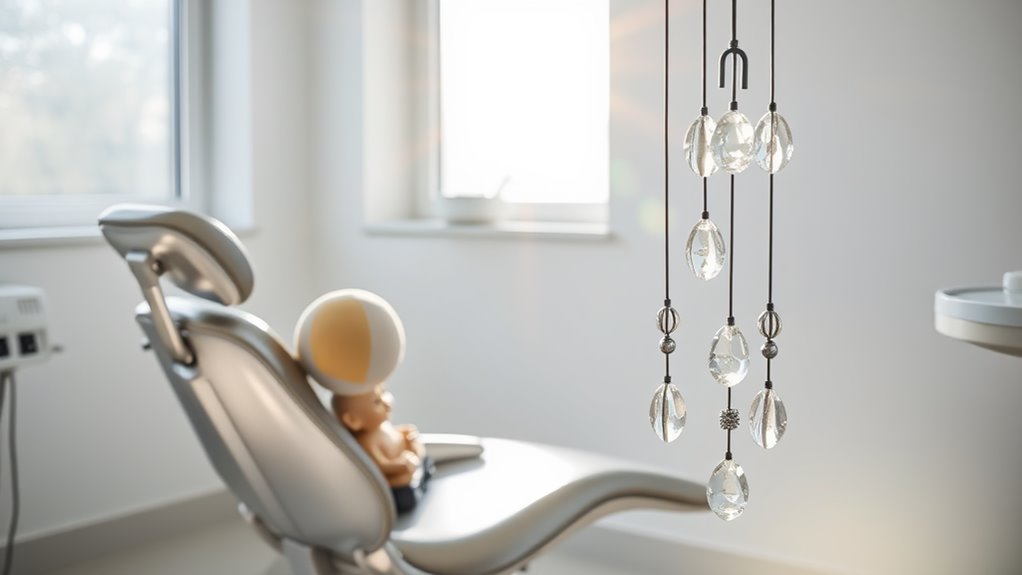This Weird Psychological Trick Can Stop Dental Anxiety!
You can overcome dental anxiety using a simple but powerful technique called the 5-4-3-2-1 grounding method. This science-backed approach helps interrupt your brain’s stress response by engaging your senses: identify 5 things you see, 4 things you can touch, 3 sounds you hear, 2 scents you notice, and 1 taste you can detect. Real patients have transformed their dental visits from panic-filled ordeals to manageable experiences, and you can too – let’s explore how.
Understanding Dental Anxiety and Its Impact on Oral Health
While many people experience some nervousness about dental visits, dental anxiety affects up to 20% of adults severely enough to avoid essential care. This avoidance can lead to serious oral health problems, as untreated issues often worsen over time.
You might find yourself trapped in a vicious cycle where fear prevents treatment, causing more severe dental problems that require more intensive procedures.
Dental anxiety can manifest through various symptoms: rapid heartbeat, sweating, difficulty breathing, and even panic attacks at the thought of visiting a dentist.
You’ll often notice these symptoms days before your appointment. The causes typically stem from past traumatic dental experiences, fear of pain, feelings of helplessness in the dental chair, or anxiety about potential judgments about your oral health.
The Science Behind the 5-4-3-2-1 Grounding Technique
When anxiety overwhelms your senses during dental visits, the 5-4-3-2-1 grounding technique can help you regain control by engaging your brain’s natural stress response system.
This scientifically-backed method works by activating your prefrontal cortex, shifting focus away from anxiety triggers and into the present moment.
The technique interrupts your fight-or-flight response in three key ways:
- It forces your brain to concentrate on sensory input rather than anxious thoughts.
- It activates the parasympathetic nervous system, naturally lowering your heart rate.
- It engages working memory, making it difficult to maintain anxious thought patterns.
You’ll notice your breathing slow down and muscles relax as you systematically identify things you can see, touch, hear, smell, and taste in your environment.
How to Practice Sensory Grounding at the Dentist’s Office
Putting the 5-4-3-2-1 grounding technique into practice at the dentist’s office requires a simple but focused approach.
While sitting in the dental chair, start by identifying five things you can see: the ceiling tiles, medical posters, dental tools, window blinds, or your shoes.
Next, notice four things you can touch: the chair’s texture, your clothing, your hands, or the armrests.
Listen for three distinct sounds: the office music, equipment humming, or voices in the hallway.
Focus on two things you can smell, such as the clinic’s antiseptic scent or mint toothpaste.
Finally, identify one thing you can taste – perhaps the remnants of your morning coffee or the mint from your toothpaste.
You can repeat this cycle whenever anxiety starts to build.
Real Patient Success Stories Using This Method
The transformative power of sensory grounding has helped countless dental patients overcome their fears.
You’ll be inspired by these real stories of people who’ve conquered their dental anxiety using this technique.
-
Sarah, who hadn’t visited a dentist in 15 years due to panic attacks, now maintains regular checkups by focusing on counting ceiling tiles and describing their patterns during procedures.
-
Mike overcame his severe gag reflex by gripping a stress ball and concentrating on its texture and temperature, making root canal treatment possible for the first time.
-
Jennifer manages her fear by running her tongue over her teeth and mentally describing the sensation, a trick that’s helped her complete multiple cavity fillings without medication.
These success stories prove that sensory grounding can make dental visits manageable and even routine.
Tips for Making the Technique Part of Your Dental Routine
Integrating sensory grounding into your dental visits doesn’t have to be complicated. Start practicing the 5-4-3-2-1 technique at home while lying in a reclined position similar to a dental chair.
Pick specific objects, textures, and sounds in your usual environment to focus on during each practice session.
When you’re at the dentist’s office, arrive 10 minutes early to familiarize yourself with the surroundings and identify potential sensory anchors.
You’ll want to note five visible items, four textures you can touch, three distinct sounds, two scents, and one taste.
Bring a small comfort item, like a stress ball or smooth stone, to hold during procedures. If needed, let your dentist know you’re using this coping strategy – most will gladly accommodate brief pauses for you to reground yourself.




